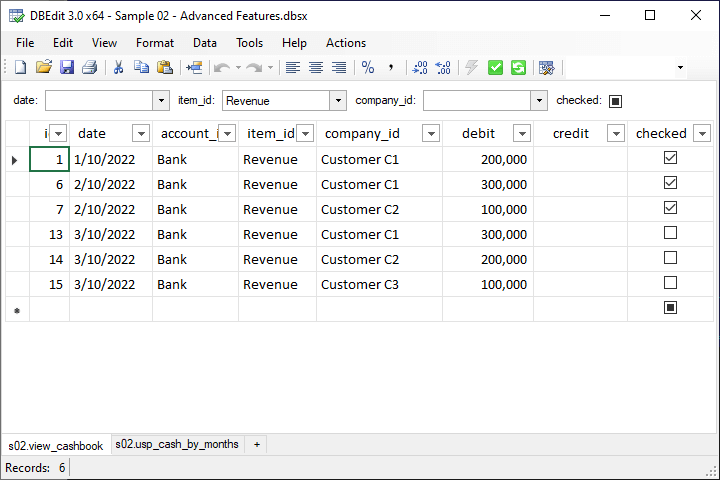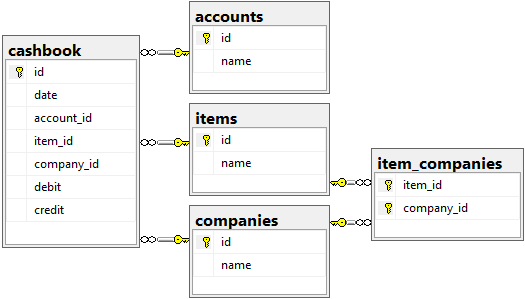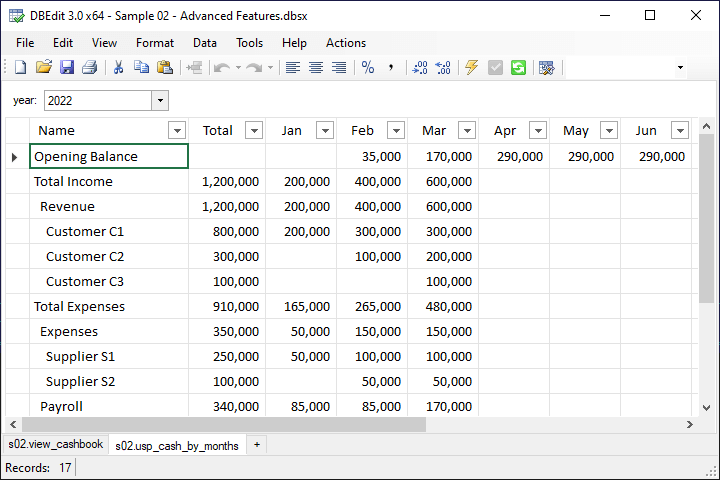Getting Started with DBEdit
DBEdit is an advanced database data editor.
It allows getting data from tables, views, stored procedures, or SQL queries and saving changes back to a database.
Here is a sample of data loaded from a view:

Contrary to other editors, DBEdit creates drop-down lists for fields and parameters using user-friendly value names from the referenced tables.
For example, the sample above has the following tables:

And, the view has the following code:
CREATE VIEW s02.view_cashbook
AS
SELECT
*
FROM
s02.cashbook
It is enough! DBEdit finds related tables itself.
Moreover, database developers can customize a lot of features.
Here is a sample of an editable report implemented using a stored procedure:

DBEdit can execute supplied procedures or SQL codes on cell change events.
For example, the handler of this stored procedure has the following declaration:
CREATE PROCEDURE s02.usp_cash_by_months_change
@column_name nvarchar(255)
, @cell_number_value money = NULL
, @section int = NULL
, @item_id int = NULL
, @company_id int = NULL
, @year int = NULL
The procedure gets the column name and value of the edited cell and values from table columns and procedure parameters.
You can use DBEdit on any supported database platforms in the same manner:
- Microsoft SQL Server
- Oracle Database
- IBM DB2
- MySQL and MariaDB
- PostgreSQL
- NuoDB
- Snowflake
- SQL Server Compact
- SQLite
You can try to connect to your database and edit data easily.
To learn DBEdit features, try its samples. You will find code templates for typical tasks.
See also: